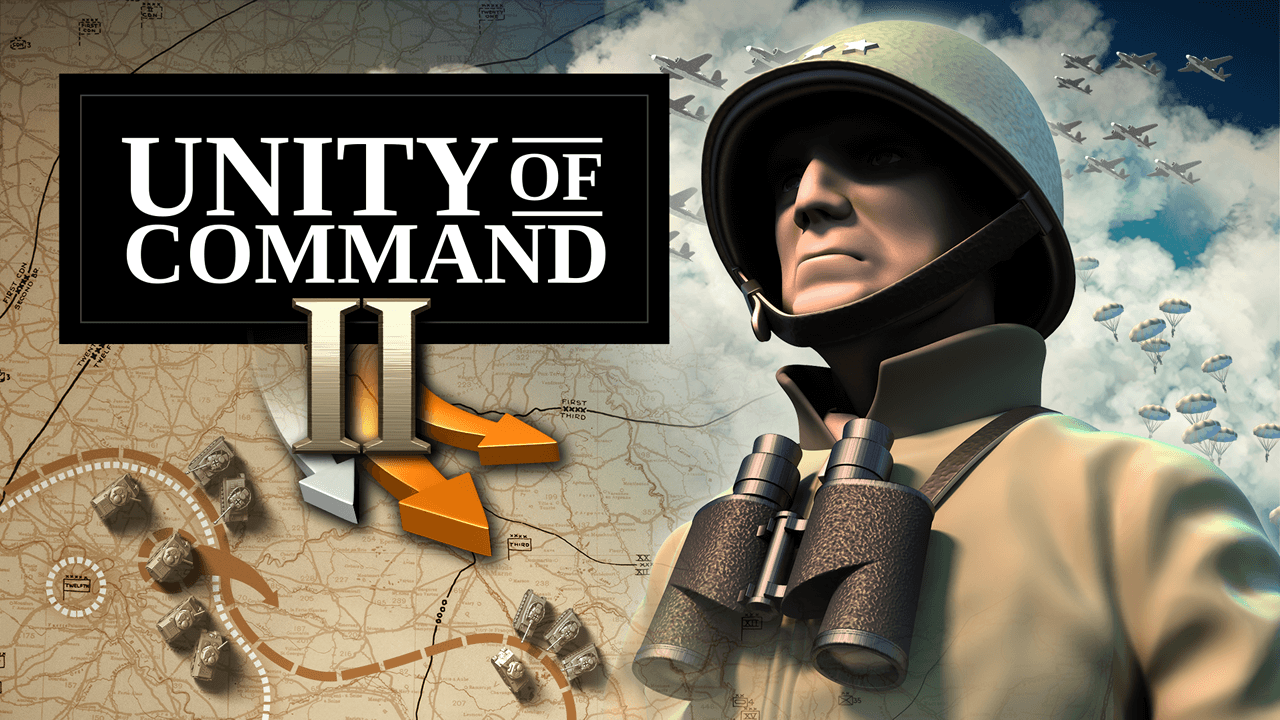The tale of Unity of Command II now stretches five years – basically the length of World War II. Sadly, the game didn’t start with the invasion of Poland, thus depriving us of the opportunity to replay the conflict as it happened in real-time. The DLCs, however, are arranged in roughly chronological order. And with the Unity of Command II: Berlin DLC, we’ve reached the end of the line. Next stop: the roof of the Reichstag.
Berlin is probably the biggest DLC yet. It features two campaigns: the Nazi defense of Hungary and Red Army’s Greatest Hits: 1944-1945. The former is but 7 scenarios: 4 historical and 3 on the alternate track. The Soviet campaign is 25 scenarios, none of them optional. 25 scenarios, Konev! You’ll sweep through Ukraine and into the Balkans in the South; in the North, you’ll relieve Leningrad, rush through the Baltics and take Berlin.
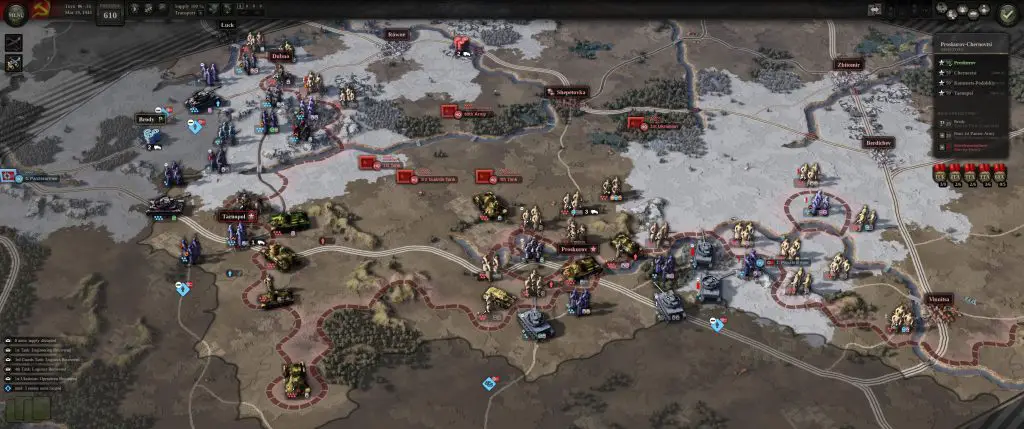
A Symphony for Stalin’s Organ
Bagration is one of the most monumental military undertakings of all time, and so is the Soviet campaign. Not only is it the largest campaign since the original Victory in the West, it also features some of the largest maps, commands and unit counts that you had ever seen. And that’s before you look at the hordes of reserve units that the Nazis will bring in.
But here’s the kicker: in the Berlin DLC, you no longer command the trash Soviet divisions. No, this is 1944. You’re throwing around lean and mean rifle corps of five steps and three specialists. When faced with German infantry formations, your corps may be able to overcome them as is, without expending precious Command Points. In fact, you will get so efficient at kicking the Germans in the teeth that you’ll end up with turns where you forget to use air attacks or have Command Points leftover.
And that’s before you get into the tank or mechanized corps – or their Guard versions.
At the same time, Nazi Germany is on the back foot. 7 step formations are rare. All sorts of reservist, Luftwaffe and local collaborator units are in. Hungarians and Romanians await their turn to die. Scenarios will often have the Nazis receive dozens of units as reserves, but that’s because your guys will be destroying them nearly as fast.
That’s not to say that the Germans aren’t dangerous in Berlin DLC. If not treated carefully, armored and mechanized formations will destroy equivalent units and slaughter infantry. Plus, the AI is as murderous as ever, both all too keen to cut off your forces from supply and to crush lonely armored formations that had penetrated deep into their ranks.
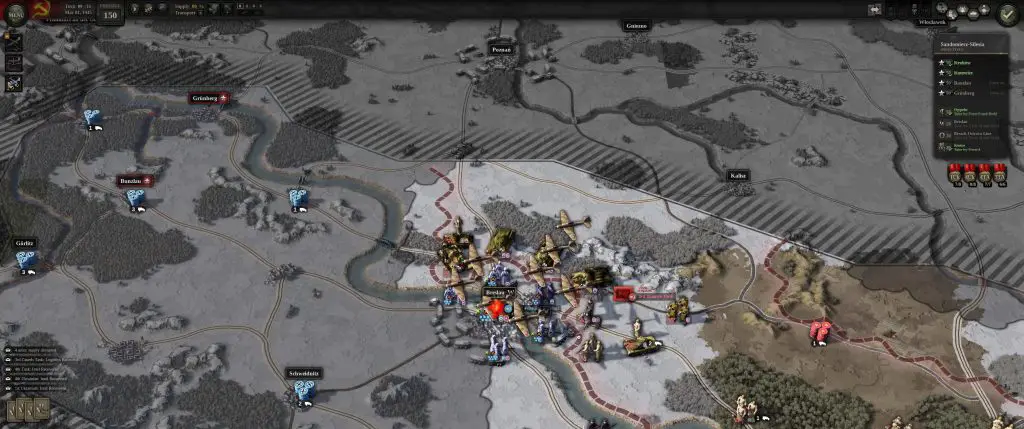
I don’t know whether it says more about me as a player or Unity of Command II as a game, but it was only now, more than 200 hours in, that I started using the Rearguard order quite often. The ability for your unit to no-sell an enemy attack and retreat unharmed is amazing, and it seems to stump the AI sometimes. It certainly didn’t expect your tanks to run away after driving a wedge into their infantry forces! But run away they shall as it is key in preserving your strength.
Gaming out the war
That’s the other peculiarity of Berlin DLC: as the Soviets, you will rarely have reserves. Most of the units on the field will carry over to the next scenario quite often. At the same time, you’ll notice dudes dying rather than becoming stragglers, so rebuilding forces will be an exercise in Prestige Point expenditure and finding those non-essential units to strip strength and specialists from.
Yes, that’s gamey, and doing so doesn’t feel great. But this is one flaw of Unity of Command II I only just identified. Knowing which units will transfer or not immediately creates two castes: the important ones and the disposables. It’s even worse than in Panzer General, since your important ones can become disposable in the next scenario.
Neither does it help form a connection to certain units, especially due to the minimalist Soviet naming convention: it’s all 1st Guards Tank Corps this and 153 Rifle Corps that. Compare it to all the lovingly-specific German groupings, all the kampfgruppes named after their commander, and subdivisional detachments thrown in front of your forces. I remember 8th SS Cavalry Division “Florian Geyer”, which I destroyed a few times, better than any of my own troops that actually killed it.
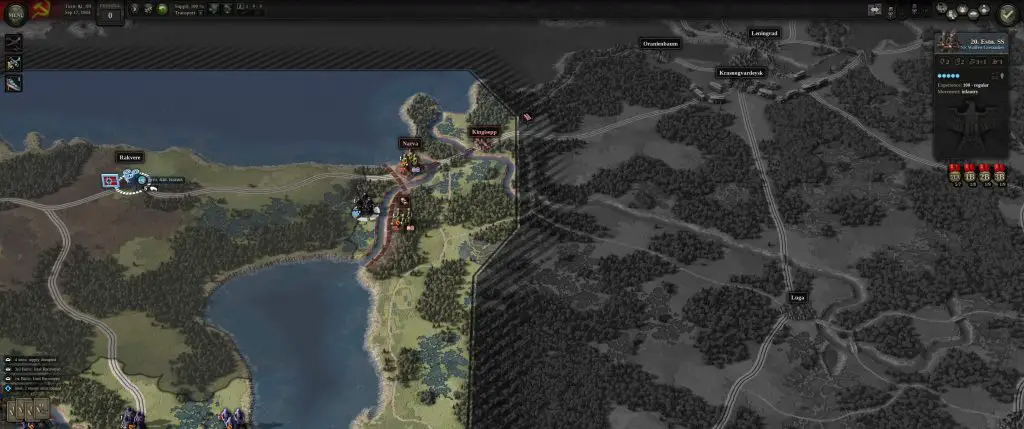
In a similar vein, there’s also the trick 2×2 Games pulled on us when it comes to HQs. In the Victory in the East campaign, you’ll only upgrade and see tank armies. But those HQs will only control two-three units per scenario. The vast bulk of the forces will be under fronts – you know, 1st Ukrainian, 1st Baltic, etc.. So even if you wanted to, you wouldn’t be able to spend prestige on their upgrades.
You’re not really poorer for it because the fronts have all the upgrades you need, crossing rivers, bridging, and carrying out those set-piece attacks. With the way AI is happy to blow up bridges, you’ll definitely need those capabilities.
And since tank armies will be mostly responsible for armored formations, you don’t even need to upgrade them much. Tanks don’t benefit from Set-piece Assault command, and mechanized can’t do major river crossings. You can leave those upgrades – as well as not paying CP to organize stragglers – to gather dust.
This saves you a lot of prestige to invest in filling out your troops, reinforcing depleted formations and getting those ever-important specialist steps.
Practice makes dead Nazis
At the end of the day, you’re not really meant to grind down the enemy forces. Tank armies and infantry fronts are a one-two-punch combo. Tanks penetrate the enemy line and race ahead. Infantry surrounds whatever’s left and starves them out. It’s up to you to figure out the most efficient ways to do it.
And in 25 scenarios, you’ll definitely have the pace of your operations down. Break the frontline. Lure in armor. Crush the armored units. A rump of a German panzer division can be easily broken by a rifle corps that has artillery backup. Break into the operational depth and live off unguarded enemy resource depots. Just don’t forget to move your HQ, as you can’t upgrade the command range of the tank armies – and your resupply and rear-guard orders may be sorely needed.
In contrast, the German campaign – Balaton 45 – is much less impressive. The Soviets will aggressively throw themselves at your units, so you need to be cautious. But as always, armor leads, infantry follows. Only you have increasingly less and less of either…
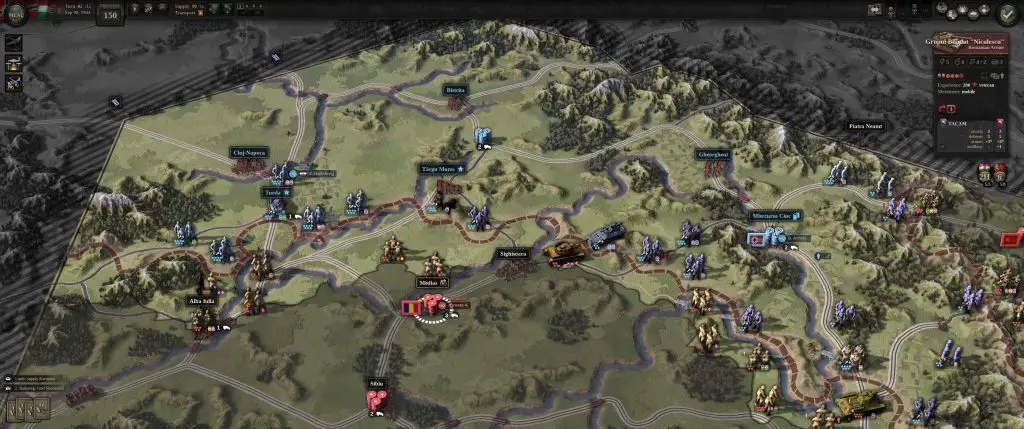
But while the German campaign has an actual alternate history track, the Soviet one has to put the smaller alternate scenarios within scenarios. It is not just capturing optional objectives to get a leg up at the start of the next scenario. It’s also stuff like keeping the Slovak National Rising forces alive to have, fairly ahistorically, a Czechoslovak-shaped hole in the enemy defense in the next scenario.
A system in crisis
Unfortunately, while the scope of the Berlin DLC lets 2×2 Games show some of their best game design chops, it also displays strain the system can’t quite manage. The Carpathian scenario is probably the biggest in size, but it also means that, on an enemy turn, the camera will spend one and half minutes zooming from one edge of the map to another as the AI activates units, leaving you dizzy with motion sickness.
I think the map size also baffles the AI. I’m sure that I won the Battle for Budapest because the Germans were too happy with bridge destruction and killed their own supply lines. As an overall trend, it does some questionable troop movements and attacks in sectors that entirely don’t matter. There’s also the fact that it doesn’t know how to use air strikes offensively – they’re always an afterthought, killing my poor, defenseless armor units at the end of the enemy turn.
I also noticed the trend of me refighting over the same ground over subsequent scenarios. I don’t actually know how fluid the situation was in, say, Czechoslovakia. But if I easily take some towns and villages in one scenario, I would expect not to have to fight over them again next time. Again, this is a game limitation: with a lot of carryover forces on a long campaign, the player can easily end up with elite forces that wipe the map.
All that said, I got a gold medal in the end, so I’m happy. Berlin DLC is a fittingly grandiose way to end the run of Unity of Command II expansions. Personally, I’m waiting for Unity of Command: Cold War Gone Hot, where you control battalions and or brigades. But maybe they’ll surprise us yet. The Asian-Pacific theater has remained untouched in the series…

